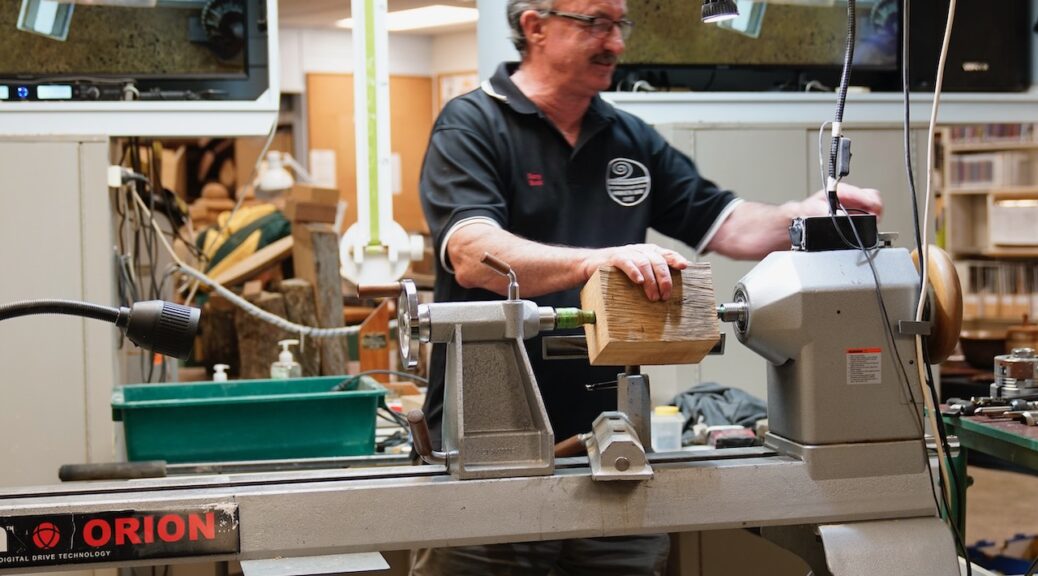Club Meeting: 7 Feb 2024
Report by: Bob Yandell
Terry Scott showed a teapot in what he believed was the style Art Deco that is the term theme. Whether it was Art Nova as he believed it certainly was a product design that would be appreciated whatever category it might be in.
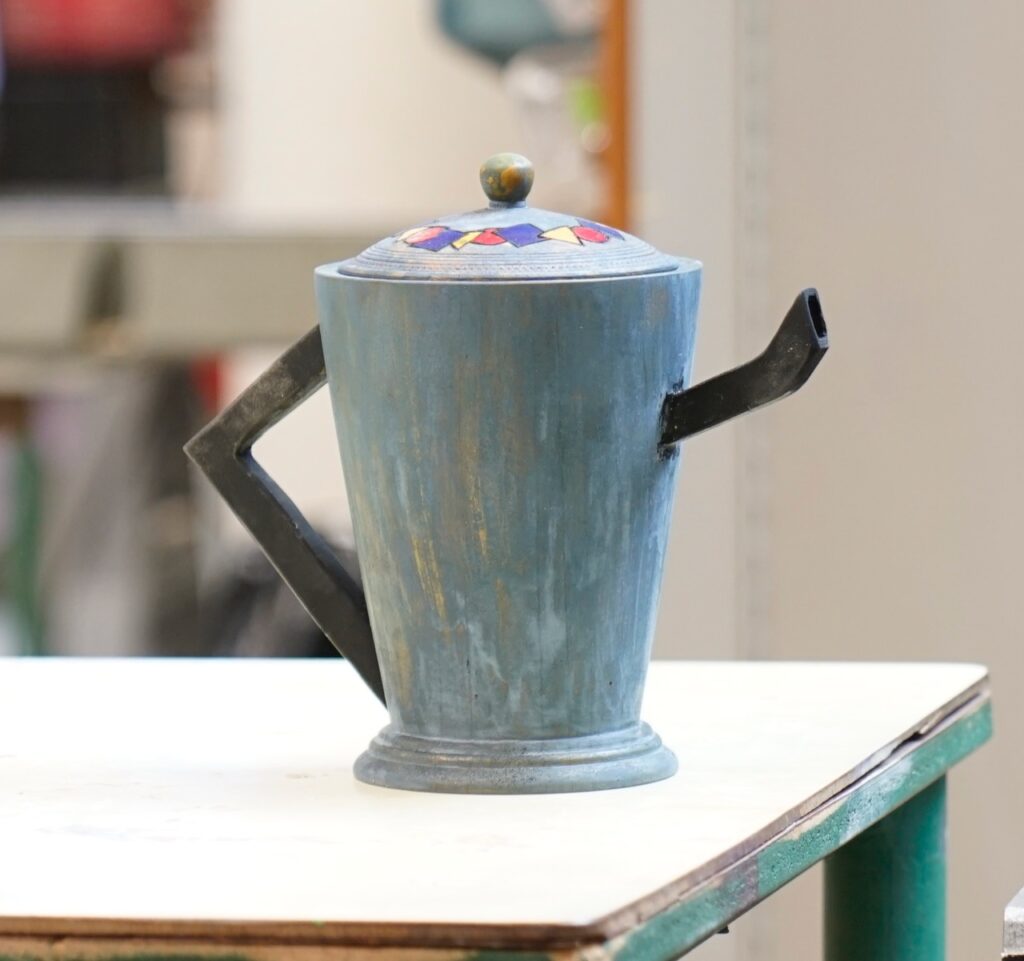
The wood, Macrocarpa, began as a 110x110x250(?) block and a piece 110x 20×250 flat. The latter was for the handle and spout.
The block was mounted between Steb Centres and turned round with the roughing gouge with the tool rest just above centre. A tip given by Terry was to mark the bevel with a black felt tip to see how the bevel was rubbing against the wood because the black should be removed from the cutting edge across the whole bevel and not just the tip/cutting edge.
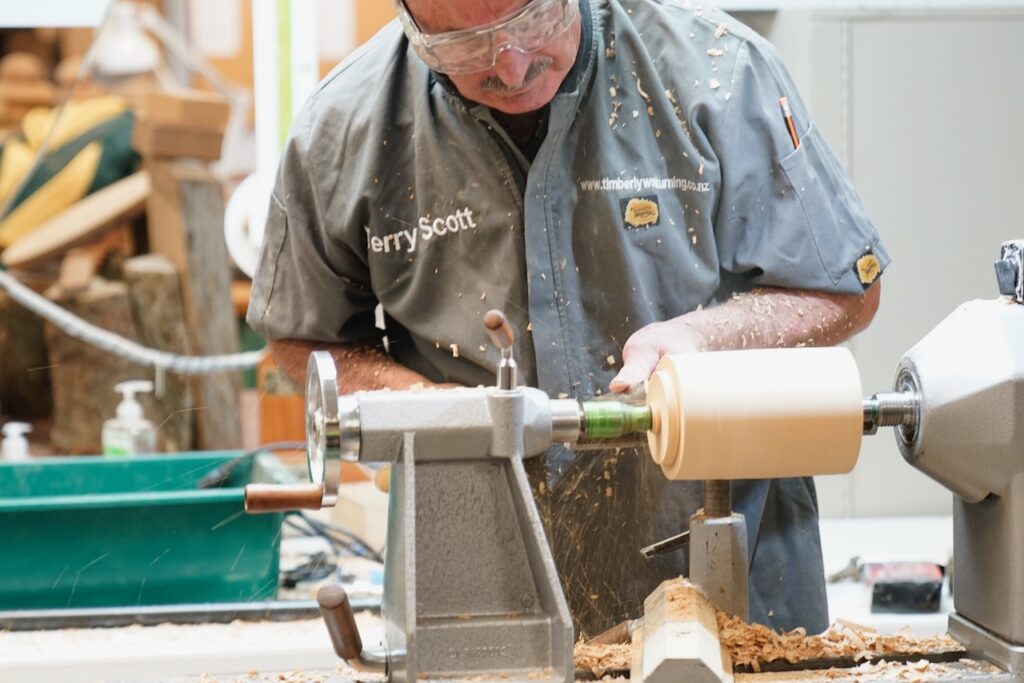
Once round to 110mm, cutting from the centre to the end to avoid clipping off a splinter , which is a real possibility if you come in from an end, Terry cut a spigot on the tail stock end to fit the 100mm chuck. The following points were marked from the spigot- 20/150. Using the parting tool on the 20mm mark and cutting on the 150mm side a groove was cut to achieve a diameter of 80mm. Between the roughing gouge and skew a straight line was cut. Surface was finished with clean cuts by the skew moving slowly down the slope to the base of the teapot. The base was also cut as the access was cleared. Terry pointed out that the slower the movement with a sharp tool, ensured no spiralling.
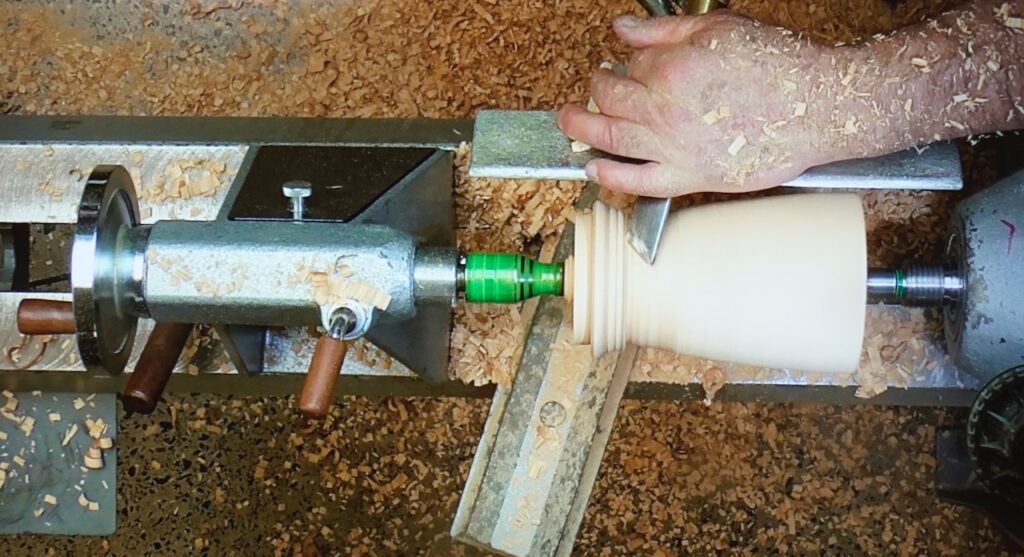
The profile was then marked, in pencil, at each index of the chuck from the 150 to the 80 diameter. Lines were also marked every 10 – 20mm up the side. The resulting grid pattern was for determining the location of the spout and handle but can also be used for positioning graphics.
The base was then placed in the 100mm chuck, ensuring alignment using the centre created by the Steb centre in the now top, the chuck was tightened and tail stock removed.
Using a Forstner, in an extension, a hole was drilled to depth as marked with masking tape on the shaft, remembering to remove swarf/wood regularly and allowing the forstner to cool.
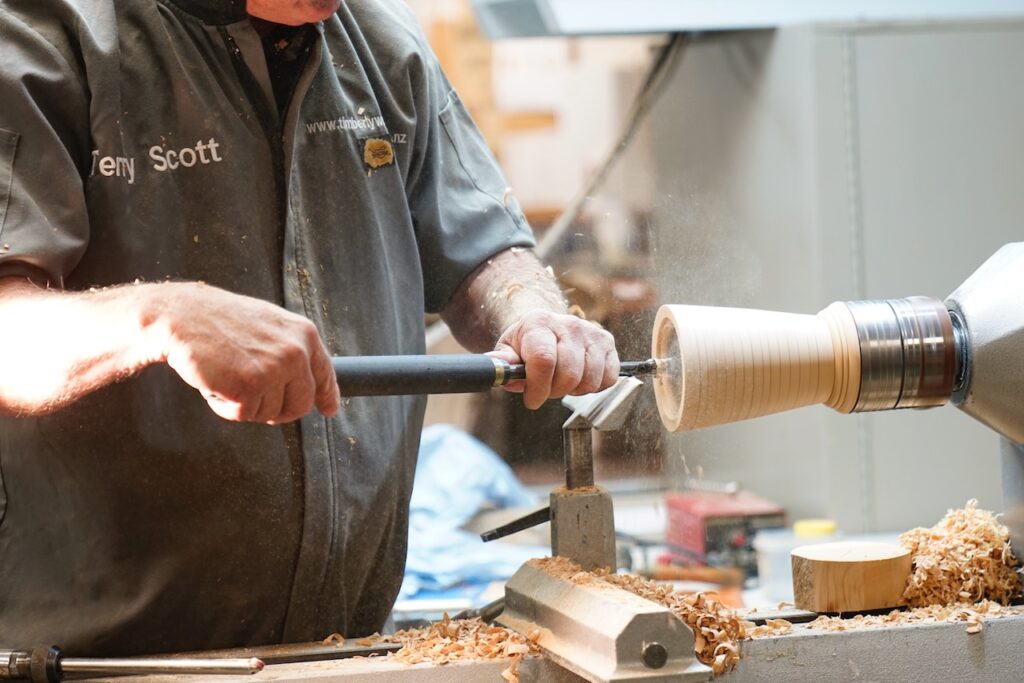
The top of the teapot was cleaned up and a recess for the lid to a depth of 5/10mm. The interior wood was removed by using a combination of hollowing tools.
The lid was made from cross grain wood and the process was as any lid with a knob.
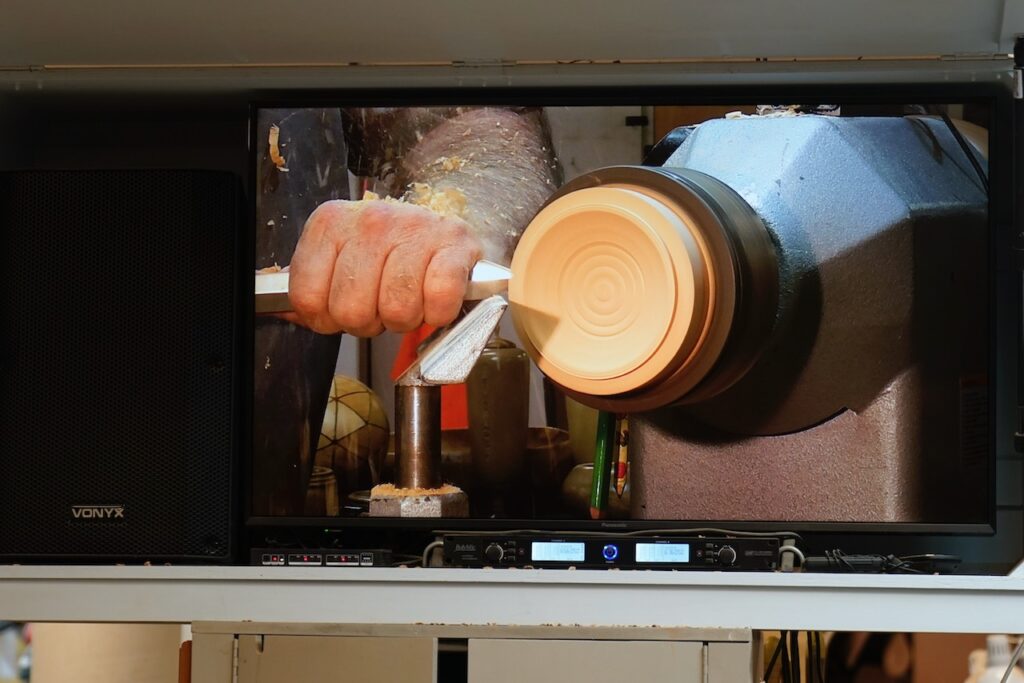
The handle and spout were drawn onto the board and the angle of the handle was 85 not a right angle.
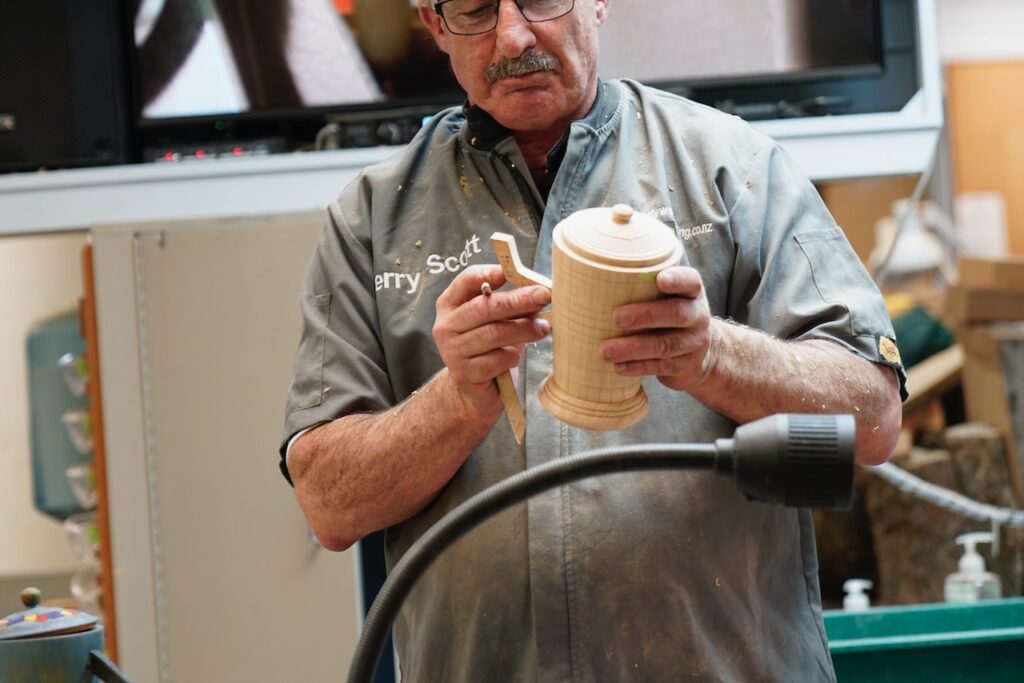
The spout and handle were shaped to fit the curve of the teapot. Panel pins were inserted, 2 on each interface between the surface of both spout and handle and then glued onto the teapot using the grid lines to ensure the correct position especially for the spout so outlet is below lid
